Jane Lindskold's Blog, page 122
July 3, 2015
FF: Busy, But Still Managed to Read
This week was really busy. Not only did Artemis Invaded come out, but I immersed myself so I could finish a rather long (14,000 plus words) “short story” about the further adventures of Stephanie Harrington and Climbs Quickly (the main characters in Fire Season and Treecat Wars).
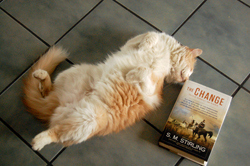
Persephone Says, “Never change.”
The Friday Fragments lists what I’ve read over the past week. Most of the time I don’t include either short fiction or magazine articles.
The Fragments are not meant to be a recommendation list. If you’re interested in a not-at-all-inclusive recommendation list, you can look on my website under Neat Stuff.
Once again, this is not a book review column. It’s just a list with, maybe, a few opinions tossed in.
Recently Completed:
So You Want to Be a Wizard by Diane Duane. Audiobook. Although this book is clearly intended for the junior high set, it doesn’t pull any punches with vocabulary. If you read it wanting Harry Potter, you’re going to be disappointed. If you read it with no expectations, there’s a lot to like.
The Princess in Black by Shannon Hale and Dean Hale, illustrated by LeUyen Pham. This was recommended to me by a six year-old friend. Richly illustrated in vivid color, it tells of Princess Magnolia who fights monsters as the mysterious Princess in Black. At first, I’ll admit, it read like a retake on SheRa, Princess of Power. However, there’s a real sense of the how kids have rich inner lives. Princess Magnolia’s just happens to be more than fantasy. This, as well as a princess who looks like a little girl, not a super model, won me over.
Island Dreams by Gerald Hausman. A strong sense of place and an almost magical ability to make the reader not only see, but feel, hear, smell, and even taste locations makes for a vivid poetry collection. Some of the personal ones – especially on the death of family or friends – are like peeping into the author’s heart.
Naruto, issue 70. Manga. Since Jim and I are watching the start of the story as anime, reading as the story is building to the end is providing some fascinating thoughts on story development.
In Progress:
The Change: Tales of Downfall and Rebirth, edited by S.M. Stirling. I’m about half-way through this long collection.
Deep Wizardry by Diane Duane. Audiobook. Kit and Nita’s summer holiday becomes entangled with underwater magic. So far, interesting.
Sammy Keyes and the Sisters of Mercy by Wendelin Van Draanen. This time Sammy finds herself by a priest of stealing his treasured personal cross. Just started.
Also:
No also, unless you count re-reading my manuscript.


July 2, 2015
TT: Contentious Flags
JANE: Alan, last week, you mentioned that there’s actually a Maori flag of sorts. How does that work?
ALAN: Yes – Tino rangatiratanga is a Maori phrase that probably best translates as “Maori Sovereignty.” It’s also the name of a flag that is sometimes referred to as the Maori flag. Personally I find it to be a very attractive design. (You can find a discussion of Tino rangatiratanga as a political movement at this link).

Maori Flag
JANE: That’s a gorgeous flag. Why can’t you guys just use that one? It fills all your requirements and would look lovely on knickers.
ALAN: Indeed it would! Personally, I’m very fond of it. Unfortunately, it comes with a lot of baggage. Many politically radical Maori activists passionately promote the Tino rangatiratanga flag. There have been requests to the government to have it flying alongside the New Zealand flag on significant dates such as Waitangi Day. Surprisingly, these requests have been quite effective and the flag is now often flown in that way. But its association with a set of sometimes rather extreme political views means that it is unlikely to be adopted as a national flag. In a very real sense, it’s seen as being divisive rather than as something that can promote unity.
JANE: I can understand that. Pity. It’s more than pretty. It’s elegant and memorable.
Here in the U.S. we also have a flag that is still flown in some areas of the country, although it can stir up some negative reactions. This is the flag commonly called the Confederate flag. It’s gotten a lot of press lately because of the recent shootings in South Carolina, but as a Yorkshireman-born and naturalized New Zealander, you may not be aware of its actual history and origins.
ALAN: I’ve always just assumed that it was the flag under which the Confederates fought in your Civil War. I’ve never thought of it any more deeply than that. Is there more to it?
JANE: There is indeed. Oddly enough, this flag was never used by the Confederated States of America – the “South” in the American Civil War. Instead it was the battle flag of the Army of Northern Virginia commanded by General Lee.
Given the constellation that ornaments New Zealand’s current national flag, you might be amused to know that one of the nicknames for this flag is the “Southern Cross.”
ALAN: I love the nickname! I had no idea that the flag wasn’t actually used by the Confederate States. I suppose that’s what happens when you learn your history from the movies…
JANE: Or television. I’ll get to that in a moment…
The Confederate flag had a resurgence in popularity in the early twentieth century as an emblem of the American South. In World War II, some military units associated with the South carried the Confederate flag as a sort of identity marker.
However, later the flag was adopted by radical racist groups like the Ku Klux Klan. This tarnished the flag’s image in the eyes of many.
ALAN: Yes, I can see how that must have poisoned the well.
JANE: Not all the uses have been negative. There’s one that’s actually amusingly appropriate. Did you ever watch a television show called The Dukes of Hazzard?
ALAN: Oh, yes! A friend of mine who was a keen motorcyclist once told me, with a perfectly straight face, that he was going to replace his leathers with a Dukes of Hazzard T-shirt. When I asked him why, he pointed out that they were constantly crashing into things and being thrown out of their vehicles and they never got so much as a scratch or a graze. He didn’t know what the T-shirts were made of, but the material obviously provided much better protection than a full set of leathers did!
JANE: Oh… I’m laughing. I read that to Jim and he’s bent double at the waist with tears coming out of his eyes. You have seen the show!
On The Dukes of Hazzard, the main characters drove a car called The General Lee. Painted on the car’s roof is the Confederate flag. When you remember that this flag was the banner flown by the actual General Lee, it is nicely appropriate.
I don’t think it’s a coincidence, either. According to one source I looked at, the car was originally going to be called “Traveler,” after General Lee’s horse, but the idea was dropped because they figured no one would catch the reference.
ALAN: Probably true. I only learned about Traveler when I read Connie Willis’ novel Lincoln’s Dreams. But I think I’ve always known about General Lee.
JANE: Hey, that’s where I learned about the horse, too! See, reading SF is educational…
Anyhow, you can find lots of information about the Confederate Flag on-line, including some really loopy stuff, so I won’t repeat. In a sense though, it’s become our Maori flag – a design that has acquired numerous negative associations that have nothing to do with its original creation.
ALAN: A striking parallel.
JANE: I actually have another flag-related question for you, but it could get complicated, so I’ll save it for next time.


July 1, 2015
Artemis Invaded Is Now Officially Released!
Why am I bouncing up and down in excitement?
June 30th marked the release of Artemis Invaded, the sequel to last year’s acclaimed novel Artemis Awakening.
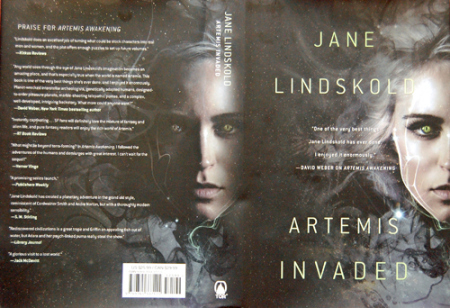
Cover Flat Revealed…
There’s also good news for those of you who don’t buy hard cover books and don’t use e-readers. Artemis Awakening is now available in paperback!
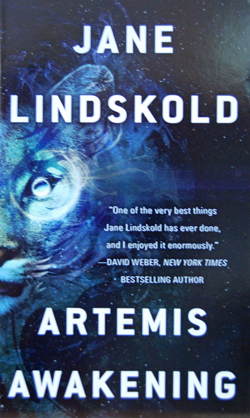
Cover Revised for Paperback!
So what’s all the excitement about? For me, Artemis Awakening and Artemis Invaded embrace the type of science fiction that got me hooked on the genre. Rather than dystopias that make you feel better when you close the book, here’s a world filled with wonder and the fulfillment of dreams. Rather than characters you’re glad you’ll never meet, here are characters you wish you could be – and that you can be both while you’re reading and in your dreams thereafter.
Rather than being told everything you can’t have, Artemis is a world designed to make both inhabitants and visitors wiser, stronger, more alert to possibility. And this isn’t limited to humans. There are some very interesting animals. And the planet Artemis herself…
Mystery. Intrigue. Romance… It’s all there and more!
In Artemis Awakening, Griffin Dane achieves his long-held goal of locating the long-lost planet of Artemis. Unfortunately, things do not go according to plan. When a malfunction causes Griffin’s shuttle to crash on the planet’s surface, he’s rescued by Adara the Huntress and her puma demiurge, Sand Shadow.
Events cascade from there, including the revelation that many things that both Griffin and Adara held as established truths may not be true at all.
Artemis Invaded continues the on-rush of events triggered by Griffin’s crash – which may not, after all, have been a crash. Old enemies and rivals are joined by new opponents. Adara must come to terms with her bond with the planetary intelligence – and with the two men who are best friends, and rivals for her affections.
A new discovery reveals the actual reason the planet was created. Obsessed with his finds, Griffin is in grave danger of alienating his allies, just when he will need them most. And the invaders… Let’s just say you don’t need to worry about this turning into same-old, same-old military SF! This is much, much cooler.
Who says? Well, I do! The question SF/F writers are asked most often is “Why do you write ‘that stuff’?” This is why, because it’s so much fun to take reality to the limits and beyond.
I hope you’ll join me on Artemis. Also, if you like Artemis and want to be sure it’s there to go back to, help push out the signal. Word of mouth is the best way to make sure you get more of what you want. Don’t stay silent!


June 26, 2015
FF: Trying is Worth It!
This week, two of the novels I read tried to be more than they were – but I enjoyed them both, even though I felt there were stumbles. I also liked how they caused me to do a lot of thinking about writing as a craft.
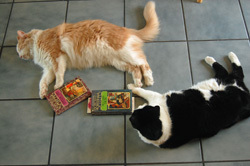
Book Chat, Two Cats
New to this feature? The Friday Fragments lists what I’ve read over the past week. Most of the time I don’t include either short fiction or magazine articles.
The Fragments are not meant to be a recommendation list. If you’re interested in a not-at-all-inclusive recommendation list, you can look on my website under Neat Stuff.
Once again, this is not a book review column. It’s just a list with, maybe, a few opinions tossed in.
Recently Completed:
Bone Gap by Laura Ruby. Audiobook. Saying this is YA fantasy is like saying a slice of bread with a slice of tomato and another of American cheese is pizza. I understand reviewers are calling this “magical realism.” I wouldn’t go that far, but the author did strive hard. Definitely liked the characters. Vivid and engaging.
Unnatural Death by Dorothy L. Sayers. I’ve read this before, but it still hooked me in. The murder might have been “perfect,” but the murderer could not leave well enough alone – especially after Peter Wimsey pokes his long, aristocratic nose in.
The Documents in the Case by Dorothy L. Sayers, with Robert Eustace. This is not a Peter Wimsey novel. It violates Show, Don’t Tell in a very interesting fashion. If you like the idea of reading other people’s mail, you’ll like this novel. Does a lot with how people see each other, and themselves. Perhaps not wholly successful but, worth the attempt. Robert Eustace provided medical and chemical background. Very unusual that he was given cover credit!
In Progress:
The Change: Tales of Downfall and Rebirth, edited by S.M. Stirling. Last time I did an event for this book, I was at a great disadvantage in that I’d only read my own story. Since there’s another event this Saturday, I decided to see how much of that I could remedy.
So You Want to Be a Wizard by Diane Duane. Audiobook. Although this book is clearly intended for the junior high set, it doesn’t pull any punches with vocabulary or breaking the rules in world building. If you read it wanting Harry Potter, you’re going to be disappointed. If you read it with no expectations, there’s a lot to like.
Also:
I’m still reading Island Dreams by Gerald Hausman. A poetry collection spanning many years and many places. It’s rich enough that I’m reading a little at a time.


June 25, 2015
TT: Alan Redesigns the New Zealand Flag
JANE: Before we unveil your design for the New Zealand flag, perhaps you can tell us a little about what considerations you took into account when putting your design together.
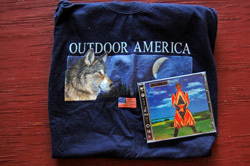
Wearing the Flag
ALAN: I was mulling over the question that you asked last time about the purpose served by a flag. It seems to me that we need something that unambiguously identifies us at a glance. It can appear as a logo on trade goods for our international markets, and it is also a symbol that can be used to unite us on important (and sometimes solemn) occasions, such as memorial services and international sporting events.
JANE: Those sound like good criteria. Tell me how you’d manage this.
ALAN: My own personal preference is for a very simple design. (I don’t like clutter.) I decided to start with a solid black background because black is very much our national colour. It is always worn by our athletes at the Olympic and Commonwealth games and it was the colour of our yacht that won the America’s Cup. Our rugby team is always referred to as the “All Blacks”, (and those who play at the junior level are referred to as the “Small Blacks”). Our basketball team is known as the “Tall Blacks,” our hockey team is called the “Black Sticks,” our ice hockey team is nicknamed the “Ice Blacks,” our softball team is the “Black Sox,” and our cricket team is known as the “Black Caps.” Not that we are obsessive about it, you understand.
JANE: Perhaps you should change your national anthem to the Rolling Stones song “Paint It Black”…
ALAN: Good idea! Maybe we could incorporate a discussion about that into the flag debate, and then we could kill two birds with one stone in the referendum.
Anyway, superimposed on the black background, in a contrasting colour, I’d like to see a symbol that is unique to us such as the kiwi or the koru (a spiral representing the unfurling of a fern frond. You can see a stylised koru in the livery of Air New Zealand planes.)
Such a design would be simple, elegant, attractive and effective. I think that kind of approach works the best. Japan’s rising sun and Canada’s maple leaf are inspired examples of similar thinking and, in my opinion, they work brilliantly.
JANE: I like your idea. You could even have both a koru and a kiwi: black background, stylized koru, and then the kiwi framed by the koru. Why don’t you compose this and submit it?
ALAN: My skills in this area are non-existent. At art class in school I never progressed beyond drawing stick men. Trust me, any design I submitted would look as if it had been put together by a drunken, blindfolded pre-schooler who had drawn it with a crayon clasped in his left foot. And that’s on a good day!
JANE: Hmm… I know some people I could enlist. We may see a visual of your design yet.
Tell me the sort of places I’d be likely to see the new flag (with your wonderful design on it) if I came back to New Zealand.
ALAN: Flags fly on government buildings (and they fly at half-mast when someone important dies). However, you seldom see flags anywhere but government buildings. Though having said that, there is a chap at the bottom of our street who has a flagpole in his garden and the NZ flag flies there all the time. Everyone else on the street regards that as rather eccentric and a little bit embarrassing. It definitely lowers the tone of the neighbourhood.
JANE: At least where I live, most people don’t routinely fly a flag either. However, some people do put them out for the Fourth of July or Memorial Day or similar occasions.
ALAN: I think identifying yourself with a national symbol like a flag is very important, psychologically speaking. When I became a New Zealand citizen I had to swear allegiance to Queen Elizabeth the Queen of New Zealand (and, by implication at least, swear allegiance to the NZ flag). My citizenship application coincided with a government economy drive so there was no actual ceremony as such. All I did was sign a piece of paper. Formal citizenship ceremonies have now been reinstated and I’ve been to several because Robin used to sing in a Kapa Haka group that performed at them. I found the ceremonies quite moving and I’m really rather sad that I never got to take part in one.
JANE: I can understand why. Ceremonies are a form of ritual magic and you missed out!
ALAN: Though having said all that, I don’t think a flag necessarily has to be considered sacrosanct. Nothing is so serious that you can’t have a bit of fun with it. I got quite a kick out of seeing David Bowie dressing himself in a suit made out of the Union Jack. Do you remember that?
JANE: Of course I do… I believe Alexander McQueen designed the coat. It was featured on the cover of Bowie’s album Earthling. Uh, not that I’m a fan or anything.
ALAN: Perish the thought.
JANE: What was the general reaction (if any) to that coat? Did anyone find it disrespectful?
ALAN: No, not in the slightest. I think the major response was “Nice coat, David.” I also remember that back in the “swinging sixties,” girls used to wear Union Jack knickers. Nobody thought anything of that either. I even vaguely recall some rock star painting his car to look like a Union Jack.
The current design of the New Zealand flag is so tremendously dull (not to say asymmetric) that I really can’t conceive of anybody wearing it when they go to the pub of an evening. I think it would be lovely if we could choose a new flag that would look nice on a T-shirt or a jumper.
JANE: I agree, actually. The U.S. flag reproduces beautifully on clothing. I’m sure someone has done the equivalent of panties, and I’m equally sure there are some who would find that disrespectful. However, no one I know has a problem with flags on shirts, jewelry, or other such images where it can be considered a representation of the national symbol in another form rather than as a banner.
Last week you mentioned that the Maori Sovereignty movement Tino rangatiratanga has its own flag. That got me thinking about our own state flags and other semi-official flags. Maybe we can discuss this next time.


June 24, 2015
The Four P’s
We had the ash tree in our front yard pruned this week.
On Monday, as I was watching the tree guys at work, I found myself thinking that gardeners often make good writers. The two crafts have a lot in common. For my amusement – and yours, hopefully – I thought I’d talk about the four P’s that gardening and writing have in common.

Last Year’s Thriving Squash
Before I do, I want to clarify that I’m talking about gardeners in the literal sense of people who tend plants. Over the last couple of years, I became aware of a bit of writing jargon that classifies writers as either “Gardeners” or “Architects.” Gardeners are those who start writing and see how the story grows. Architects plan the story in advance, sometimes in great detail.
Other terms for these types of writers are “Pantsers” (as in writing “by the seat of the pants”) and “Planners.” I originally heard them defined as “Intuitive Plotters” and “Outliners.” And, no, the divisions are not absolute. Even the most intuitive of Gardeners has times she needs to plan something out in advance. Even the most ardent Outliner enthuses about when inspiration hits, and he realizes that his architectural design will be improved by reshaping the original plan.
So, what are the Four P’s that gardeners and writers have in common? Preparation, Patience, Pleasure, and Pruning.
Preparation is key to being a good gardener – and is one of the reasons that I think calling an intuitive plotter a “Gardener” is deceptive, because to non-gardeners this implies a story that “just grows” without any effort.
A real gardener knows that nothing “just grows” without preparation. Soil needs to be prepared before a single seed or plant goes into the ground. This isn’t as simple as tossing on fertilizer, either. The first step if figuring out what sort of soil you have – or if you even have soil at all.
When I moved into my current house, I did not have soil. I had sand. Pure sand. That’s great for drainage, but lousy for nutrients. I had to make my own soil, which I did by hauling a lot of horse manure, leaves, and other organic matter, then digging it in.
The writerly equivalent of this is soaking in lots of different material – both related and unrelated to any specific project. Read lots of stuff, not just within your comfort zone. Watch your favorite TV shows or movies – but not passively. Think hard about why these pieces touch you while others leave you cold. Watch people, places, things… Go do something new. Teach someone something you’re good at. All of these will enrich your personal soil.
Patience is necessary to real gardening – and by this I mean something other than going to your local big box and buying plants already in flower and popping them in the ground. That ain’t gardening. That’s decorating
Gardening patience involves staying involved. It’s remembering to water even though the seeds won’t germinate for two weeks. It’s replanting when seeds fail to germinate. It’s weeding, so that the plants you want aren’t choked out by the plants you don’t want.
Writing patience is very similar. Too many non-writers or beginning writers think that every moment is going to be full of great excitement or, at the very least, a rich, spiritual satisfaction in being creative. Nope. Sometimes writing involves just keeping moving forward, working your way into the story, trusting that those “seeds” are going to be beautiful flowers one day.
Pleasure, whether in gardening or writing, is closely tied to patience. One of the best ways to take pleasure in a garden is delighting in all the little stages along the way. “Look! The squash has sprouted!” “Look! They’ve got their first ‘true leaves.’” “Look at all the squash blossoms! They’re so pretty.” “Look! Fruit has set. Wow… We’ve got yellow squash, green squash, and one that has stripes!”
Writing pleasure is like that. Some writers join work groups so that they can share their work along the way. I don’t workshop, but I do keep a journal wherein – especially when I’m working on a longer project, like a novel – I note each day how much I have written. This keeps me from falling into the belief that I’m “getting nowhere.” I also note when I stop to research or when life gets in the way of being able to write – like having to stop to do proofs for another project.
Pruning is very important to a healthy garden, whether on the large scale, where branches need to be thinned and old wood taken off, or on the small scale, where dead flowers need to be pinched off so that new ones will form. This process, by the by, is called “deadheading.”
Most new gardeners do not like to prune. Either they’re scared they’ll kill or maim the plant or they believe that more is better than less. I know I was in a near panic the first time I had to prune a tree but, as it was pretty clear that my little apple tree was not thriving, I had to try something. I was rewarded when the tree not only didn’t die; it did (and continues to do) better than before.
As for more being better than less… Two puny apples are not better than one three times the size of the two combined. One large, healthy rose is better than a bunch of small, scrubby blossoms. Yeah, it’s hard to remove potential fruit, but once you learn how to do so, you’ll be happy with the end results and your plant will be healthier, too.
(Reminds me. I need to look at my Elberta peach tree.)
Most new writers worry about cutting from their work. Either they worry they’ll lose something vital or they have an unjustifiably high opinion of their prose and view every word as sacred or golden, not to be tampered with.
In the first instance, if you’re really worried you’ll cut something vital, you can save it in another file and rescue it later. But at least try cutting and see if it helps the flow.
In the second case, no one’s words are always golden. Period. But you’ve heard professional writers say they don’t rewrite. That’s because when experienced writers talk about rewriting, they mean something completely different.
Roger Zelazny often spoke of himself as “not rewriting.” Then he made me a gift of a novella typescript. (To the end of his life, he composed either longhand or on a typewriter.) To my surprise, the typescript was full of little cross-outs and changes. I said, “I’ve heard you say you don’t rewrite!” Roger was astonished. “But this is just polishing. When I say ‘rewriting,’ I mean the type of redrafting I’ve heard other writers talk about, where they change entire scenes or eliminate entire plots.”
So, whether they cut out whole limbs or merely “deadhead,” writers prune. I pruned about 500 words (or two or so pages) from this essay… But they were worth writing, because they got me to where I needed to be.


June 19, 2015
FF: Great Contrasts
This week my reading varied widely, but was richer for the contrasts, sort of the way a patchwork quilt made from seemingly random bits of fabric makes each bit more distinctive.
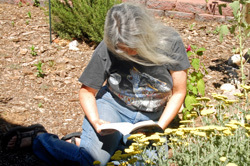
I didn’t see the camera…
Just in case you’re new to this feature, The Friday Fragments lists what I’ve read over the past week. Most of the time I don’t include either short fiction or magazine articles.
The Fragments are not meant to be a recommendation list. If you’re interested in a not-at-all-inclusive recommendation list, you can look on my website under Neat Stuff.
Once again, this is not a book review column. It’s just a list with, maybe, a few opinions tossed in.
Recently Completed:
Philip K. Dick is Dead, Alas by Michael Bishop. An odd yet completely absorbing novel. Surely a more unlikely group of heroes has never been gathered under a more unlikely leader. Their goal? Overthrow a totalitarian government headed by fourth term president Richard Nixon by means that even their leader — the possibly resurrected Philip K. Dick — is not completely certain will work. Note: Bishop’s rewritten version of the original 1987 Tor novel, The Secret Ascension, will be out later this year.
Lord of Runes, “Pathfinder Tales,” by David Gross. A good sword and sorcery novel, built around a mystery, but with plenty for the action junkies who can’t wait for a rousing fight scene. Although the novel is set in the Pathfinder gaming universe and is the fourth featuring Radovan and the Count, enough background is supplied (without ever falling into info dump territory) that I had no problem picking up the story at this point.
In Progress:
Island Dreams by Gerald Hausman. A poetry collection spanning many years and many places. It’s rich enough that I’m reading a little at a time. I asked Grery if I could share “Zelazny’s Advice” with you. He gave me permission. The spacing between lines is off. Wordpress would not cooperate!
Zelazny’s Advice
“After a while
you get good at this.”
“Then why does it get harder?”
“You’re getting better.”
Bone Gap by Laura Ruby. Audiobook. Saying this is YA fantasy is like saying a slice of bread with a slice of tomato and another of American cheese is pizza. But that’s all I can say right now, except that I like the characters. Also, non-linear narrative seems to becoming a trend in YA. I like it. Reflects the continual process of discovery that’s key to coming of age.
Unnatural Death by Dorothy L. Sayers. I felt like visiting an old friend. No apologies!
Also:
I think that’s it…


June 18, 2015
TT: Redesigning the Flag
JANE: So, Alan, I read on-line that New Zealand is considering redesigning its flag. Is that true?
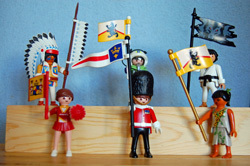
Flag of All Nations
ALAN: Yes, that’s true. Quite out of the blue, our government has decided that the country needs a new flag. There will be a referendum in 2016 so that we can all vote for the flag of our choice. Not long ago, the first of a series of public meetings was held to discuss the choices so far. Somewhat to the government’s embarrassment, nobody turned up to this meeting and the delegates were left to speak to an empty room.
As time goes on, there will be more of these meetings held in all the major, and some of the minor, centres. If the turnout continues to be so abysmally low, there will be a lot of egg left on a lot of government faces!
JANE: As I see it, nobody turning up to the meeting is an indication that the public does not feel the flag needs to be changed. Have the politicians taken the hint?
ALAN: No politicians will ever admit that they made a mistake, so they’ve just waffled a bit about inadequate publicity for the hui. (Hui is Maori for meeting, and the two words are used interchangeably – the news broadcasts that described the fiasco used both words, probably to avoid having to repeat themselves.)
JANE: What does the New Zealand flag look like anyhow?
ALAN: It has a blue background with a small union jack in one corner and a set of stars to represent the Southern Cross.
JANE: That sounds nice. Wait… Let me Google for an image. Yes. It does look nice. So why does anyone think it needs to be changed?
ALAN: Why does it need to be changed? The Union Jack is considered to be a symbol of the colonial past. The flag is (almost) identical to the Australian flag – the two are often confused. And of course there is nothing on it to indicate any Maori influence or heritage.
JANE: I can see why there might be a problem with the flag being confused with the Australian flag, but what’s wrong with a colonial past? I mean, it’s part of your history, right?
ALAN: Indeed it is, and personally I can’t see anything wrong with having the Union Jack on the flag for exactly that reason. I suspect a lot of people feel the same – it may well be the reason for the poor turnout at the first hui.
JANE: Yes. I see your point, but you were born in England, so some might say you have a different point of view. Someone must see a problem with representing New Zealand’s colonial past on the flag or this wouldn’t have come up. Can you clarify that for me?
ALAN: That’s a complex question – on the one hand, we are very proud of our independence and colonialism is a reminder of the shackles that once bound us. On the other hand, Maori are naturally somewhat resentful of the ills that colonialism brought them and they don’t look kindly upon it. Reparations have been made (and continue to be made) but some ill-feeling remains. Indeed there is a Maori Sovereignty movement called Tino rangatiratanga which actually has a flag of its own!
And on the gripping hand, these days a significant proportion of our population are of neither Maori nor British descent and therefore the history of colonialism is of little significance to them. We are starting to think of ourselves as multi-cultural, and consequently there is a feeling that we should look forwards to the future rather than backwards to the past.
JANE: That’s really interesting.
Maybe New Zealand could take inspiration from the U.S. flag. The colors (red, white, and blue) are the same as the British Union Jack, but they’ve been rearranged so that, while still serving as a nod to the past, they take on new meaning.
As you may know, the red and white stripes represent the original thirteen colonies, while the stars stand for each of the fifty states. Every so often, there’s talk about adding another state or two, and then there’s a discussion of how to add another star or so in an attractive fashion.
ALAN: Yes, I can imagine that it must be getting harder and harder to stop the design from looking crowded. I remember that there was a lot of discussion about it when Hawaii became a state in 1959. Back then I was just old enough to have started taking an interest in the world at large and Hawaii’s statehood was a topic on the English news broadcasts of the time. That was when I first realised what the stars symbolised, and I remember feeling quite smug that I had it figured out!
JANE: I bet you did feel smug. It’s like solving a code…
What sort of designs have been suggested for the New Zealand flag?
ALAN: Again, the government opened a real can of worms for themselves with this – anyone at all is allowed to submit a design to the committee overseeing the process and the committee is obliged to take every submission seriously, and make it available for discussion. Consequently a lot of people have been having a lot of fun with the idea – my favourites at the moment are a kiwi that is farting a rainbow, and a kiwi that is shooting laser beams out of its eyes (because it can!).
The irreverent clown in me really hopes that something like that does get chosen in the referendum…
The web site has all the submitted designs to date. Last time I looked, there were 3,212 of them!
You can see the farting kiwi and one or two other amusing suggestions here.
JANE: I like some of the ones that look like drawings by schoolchildren. You know, maybe in working out a new design, some thought should be put into what purpose a flag serves.
ALAN: That’s a very good question. Let me think about that and I’ll get back to you next time…
JANE: I shall eagerly await!


June 17, 2015
New Story! “The Button Witch”
My most recent short story is now available on-line at Urban Fantasy Magazine. It’s called “The Button Witch,” and is urban fantasy in the original mode – that is a fantasy story that not only takes place in a contemporary urban setting, but in which the fact that the

A Magical Assortment
setting is urban is somehow important to the story.
“The Button Witch” does not feature vampires, werewolves, or somewhat generic “fey folk.” It is not a thinly disguised romance story. It’s a story about what happens when a young woman named Penn decides to seek out an urban myth called the Button Witch and ask for a button wish.
But does the Button Witch even exist? And what the heck is a button wish?
Well, I wrote the story to find out… Now you can, too. Hopefully, you’ll enjoy what you discover.
Keep your eyes open. You never know what you might see.
Wandering off to another point entirely…
Last Sunday, when my gaming group was settling down, Dominique looked at me and said: “Oh! Jane’s wearing her shirt.”
She then paused, laughed and said, “Wow! Does that ever show how important emphasis is!”
Here’s some backstory for those of you who are now wondering if I usually run my games topless.
What Dominique actually said was: “Oh! Jane’s wearing her shirt.”
This was a reference to the week before, when Jim had been wearing a really interesting tye-dye tee shirt in which the pattern resembles the lovely marbled paper you sometimes see inside the covers of old books. Jim’s shirt is predominantly blue, with white and black marbling.
When he was complimented on it, he mentioned that he’d gotten me a similar shirt except that the colors are light purples, marbling into blue and pink. I decided to show it off the following week, thus Dominque’s comment.
The emphasis indicated that I was wearing my version of the shirt that Jim had worn the week before: Her shirt, rather than his shirt.
Anyhow, Dominique’s comment led to general silliness. “Jane is wearing her shirt” would seem to indicate that usually I do something else with shirts. (Wave them around my head, maybe?)
“Jane is wearing her shirt” would indicate that Jane usually doesn’t, in fact, wear a shirt, rather like those toddlers who decide that pants are optional. I suppose that would be one way to distract my gamers.
“Jane is wearing her shirt” would indicate that the wearing of the given shirt is something that is done by a variety of people. In this case, the “her” would probably refer to another person whose shirt has somehow become common currency.
This raises a question that writers often face… What to do if a sentence leaves unclear where the emphasis should go. Happily, most of the time context will provide the clarification. However, there are times that it does not.
Certainly, one thing a writer can do is use italics to indicate which word should be emphasized. I usually reserve this for those times when rephrasing would be awkward or clunky. Too many italicized words in a sentence, or even paragraph, create a weird cadence, like Valley Girl speak, where words are stretched and elongated for emphasis.
My usual preference is to rephrase. If I was putting Dominique’s comment into a story, I’d probably write something like, “Oh! Jane’s wearing the marbleized shirt Jim gave her.” Since, presumably the readers of the story would recall the prior discussion and know which shirt this was. If there could be any doubt, I might have her add something like “I like the purple and blue, but I think Jim’s was better for him.”
There you are… And just to make perfectly clear, I do wear a shirt when I’m running a game. I don’t need special effects to put my players off-balance!


June 12, 2015
FF: What is Sane?
When I thought about it, many of the books I’ve read recently have touched on the question of perception and sanity. Even the otherwise “real world” The Penderwicks in Spring shows how much perception matters.
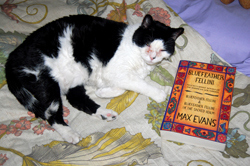
Kwahe’e Considers Max Evans
Just in case you’re new to this feature, The Friday Fragments features lists of what I’ve read over the past week. Most of the time I don’t include either short fiction or magazine articles.
The Fragments are not meant to be a recommendation list. If you’re interested in a not-at-all-inclusive list, you can look on my website under Neat Stuff.
Once again, this is not a book review column. It’s just a list with, maybe, a few opinions tossed in.
Recently Completed:
Authority by Jeff Vandemeer. Audiobook. Part two of the much-discussed “Southern Reach” trilogy. Lovecraft meets conspiracy theory meets spy thriller. Introduces more characters and more complications without losing touch with the original problem.
The Penderwicks in Spring by Jean Birdsall. Keeps the series solidly “middle grade” by focusing on three younger Penderwicks: Batty, Ben, and Lydia. Alternately grippingly sad and funny. (I actually finished this one late last week and forgot to include it!)
In Progress:
Philip K. Dick is Dead, Alas by Michael Bishop. A “fairly thorough revision” of the author’s 1987 Tor hardcover, The Secret Ascension. I’m about three-quarters done. This is the first novel I’ve read on our Kindle. Not bad, but I definitely prefer print.
Island Dreams by Gerald Hausman. A poetry collection spanning many years and many places. I was touched to find a short poem called “Zelazny’s Advice” that perfectly captured his voice.
Also:
Various articles, including a bittersweet one in Smithsonian about jet packs.





